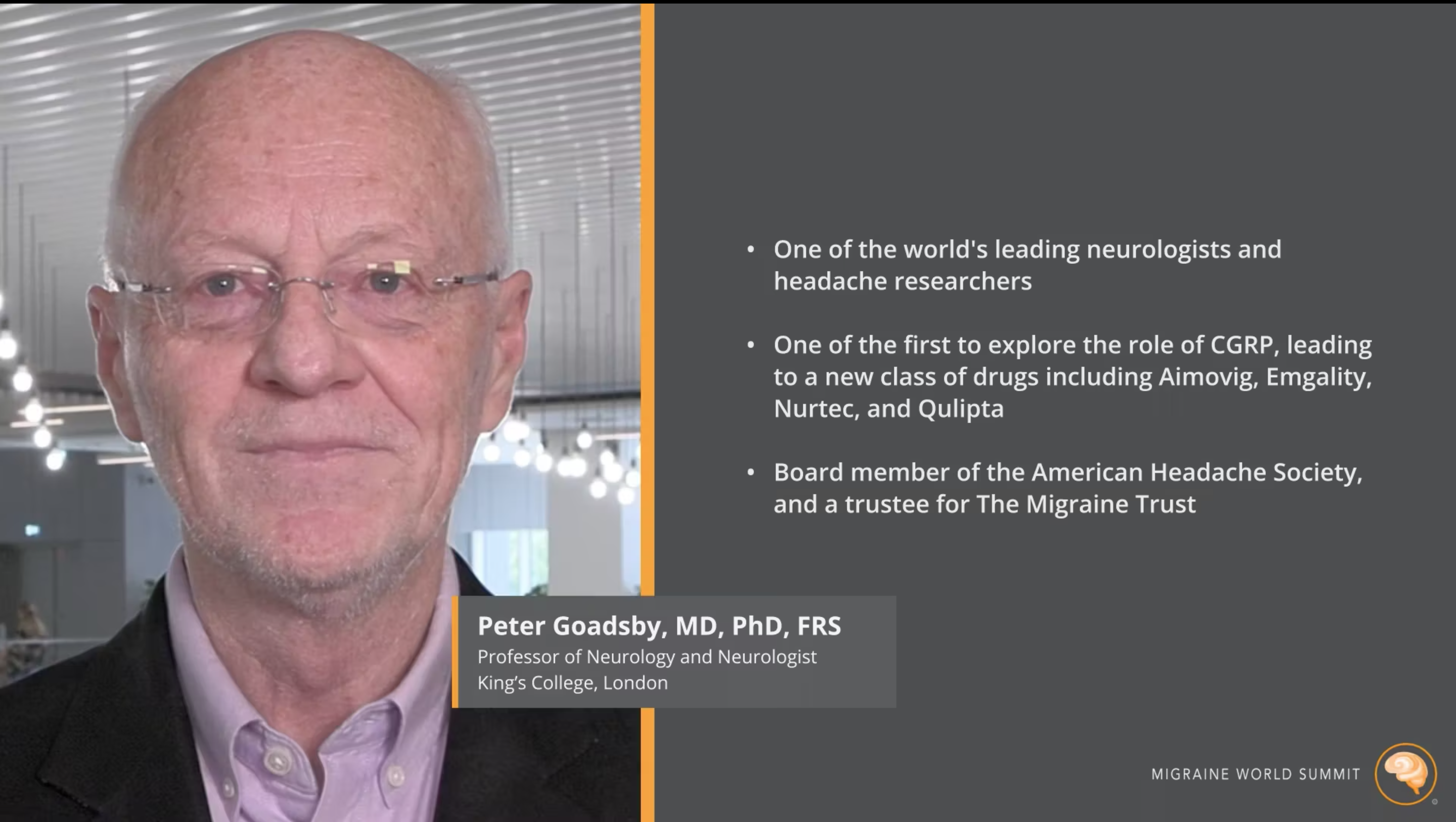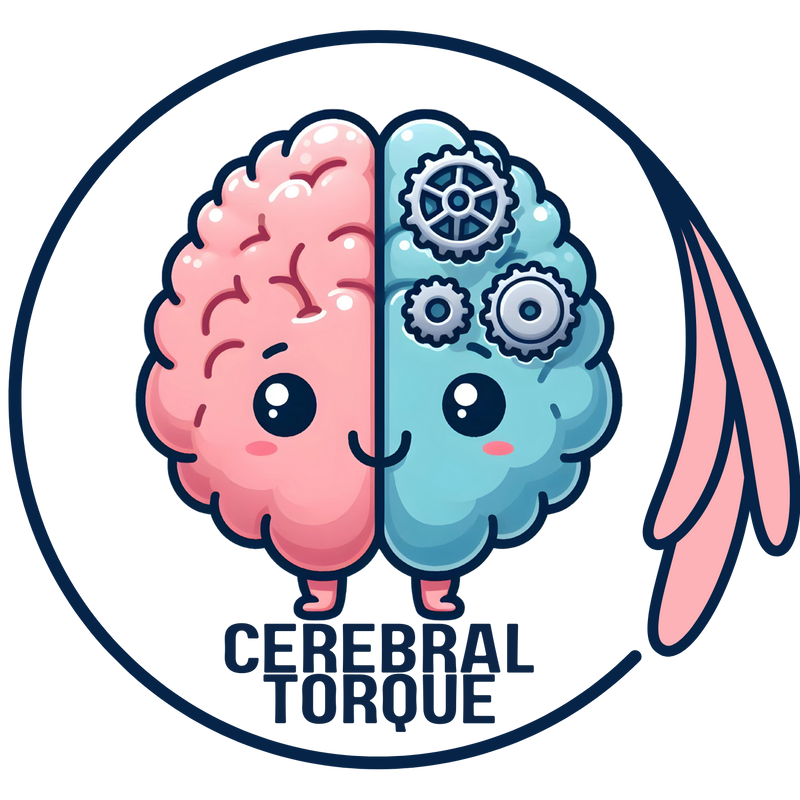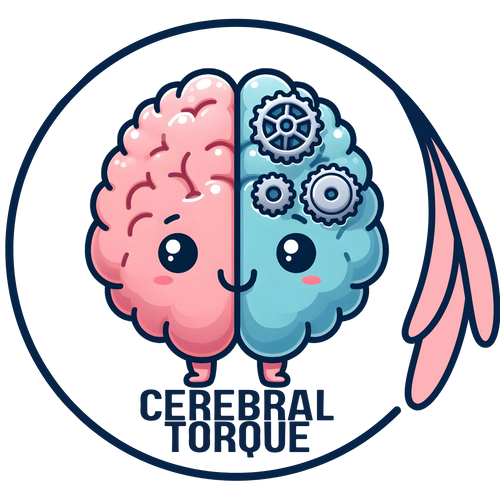Answers to Key Questions for Peter Goadsby, MD, PhD, FRS on the Topic of Migraine Biochemistry: CGRP & Beyond (Migraine World Summit - Day 2)
Posted on March 08 2024,

These are answers to key questions. This is not affiliared with Migraine World Summit or the lecturer! We highly encourage you to visit https://migraineworldsummit.com for the full video!
Key Questions for Peter Goadsby, MD, PhD, FRS on the Topic of Migraine Biochemistry: CGRP & Beyond
(Migraine World Summit - Day 2)
Here are some interesting facts from the video (watch the video for more!):
- Different migraine attack types may involve different biological pathways. Dr. Goadsby mentions that while the CGRP pathway is important for many, it does not play a role for everyone. For some people, pathways like PACAP or glutamate may be more relevant. This is interesting because it highlights the heterogeneity and complexity of migraine. There is no one-size-fits-all underlying mechanism, which explains why some people respond better to certain treatments than others.
- Anti-CGRP medications can potentially stop migraine attacks before the headache phase. A study showed that the gepant ubrogepant could stop migraine attacks when taken during the premonitory (prodrome) phase.
- Multiple pathways may need to be targeted in combination for optimal treatment. Dr. Goadsby discusses the possibility of developing "bispecific antibodies" that can block both CGRP and PACAP, and mentions that some patients may require drugs hitting multiple targets. This underscores that for many patients with migraine, no single pathway is solely responsible, so hitting multiple pathways simultaneously could provide better relief.
Key Questions:
What is calcitonin gene-related peptide (CGRP) and what role does it play in migraine disease?
CGRP is a 37-amino acid peptide found in the brain and body that transmits signals between nerves and blood vessels. It is overexpressed in migraine and plays an important role in migraine pathophysiology.
Which medications disrupt the CGRP pathway to assist in managing migraine attacks?
The triptans (sumatriptan, zolmitriptan etc.) influence CGRP release. The monoclonal antibodies (eptinezumab, fremanezumab, galcanezumab, erenumab) block CGRP or its receptor. The gepants (ubrogepant, rimegepant, atogepant) are CGRP receptor antagonists.
Here is a chart I made that shows this information in visual form with more detail: https://www.cerebraltorque.com/blogs/migrainescience/fda-approved-cgrp-inhibitors
How have CGRP inhibitor medications benefitted those with migraine?
For responders, about 50% get a 50% reduction in migraine frequency, 30% get 75% reduction, and 15-20% become migraine-free, with few side effects compared to older preventives.
What do we know so far about the potential side effects of CGRP-targeted medications?
They tend to have minimal side effects, with a small percentage experiencing constipation. Some perceived "side effects" may actually be from unmasking of other migraine symptoms when the headache is controlled.
Why do some people not respond as well as others to CGRP inhibitors?
CGRP is not important in everyone's migraine pathophysiology. As treatments become more targeted, fewer people may respond, though responders have robust benefits.
What is PACAP and what role does it play in migraine treatment?
PACAP (pituitary adenylate cyclase-activating polypeptide) is a neuropeptide involved in migraine pathways. Blocking it with antibodies reduced migraine frequency in clinical trials, so it represents a new potential preventive target.
Could an individual's migraine symptoms potentially stem from both the CGRP and PACAP pathways?
Yes, Dr. Goadsby mentions the possibility of developing bispecific antibodies targeting both CGRP and PACAP for individuals whose migraine involves both pathways.
What other substances are researchers currently looking at for potential treatments?
Glutamate receptors, protease-activated receptor 2 (PAR2), delta-opioid agonists, and orexin are some of the other targets being explored.
How can learning more about existing medications help us to understand migraine's different manifestations?
Studying medications' effects can teach us about different phases of a migraine attack and whether certain pathways are more involved in prodromal vs headache phases, for example.
How much potential is there for migraine treatments beyond CGRP?
Dr. Goadsby expresses substantial optimism that the CGRP is just the beginning, likening it to the first "movie" in a series, with more promising targets and treatments on the horizon as we deepen our understanding.
Sat, Dec 20, 25
Eptinezumab (Vyepti) Desensitization Protocol
First-ever eptinezumab (Vyepti) desensitization protocol for migraine patients with hypersensitivity reactions. 10-step hospital-based approach proven safe and effective.
Read MoreWed, Dec 17, 25
Migraine Management During Pregnancy, Breastfeeding, and Pregnancy Planning
This guide provides comprehensive, evidence-based recommendations for migraine management throughout the reproductive journey.
Read MoreMon, Nov 17, 25
Migraine Research - During the week of my absence.
Migraine Research - During the week of my absence. The Association Between Insomnia and Migraine Disability and Quality of Life This study examined how insomnia severity relates to migraine disability...
Read More


